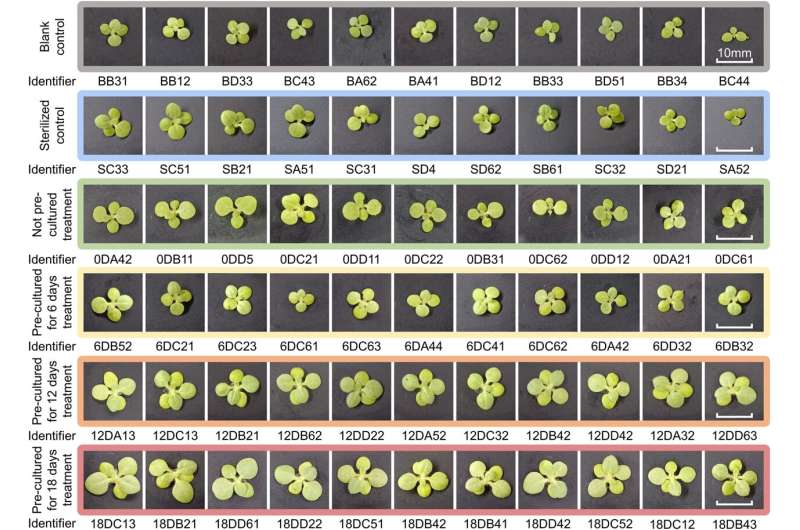November 10, 2023 report
This article has been reviewed according to Science X's editorial process and policies. Editors have highlighted the following attributes while ensuring the content's credibility:
fact-checked
peer-reviewed publication
trusted source
proofread
Using bacteria to make lunar soil more fertile

A team of agronomists and biotechnicians at China Agricultural University has found that adding bacteria to simulated lunar regolith increased the amount of phosphate in the soil for use by plants. In their study, published in the journal Communications Biology, the group added three types of bacteria to samples of volcanic material and then tested them for acidity and their ability to grow plants.
As several countries make plans to send humans back to the moon, they must address several issues—one of the most basic is figuring out a way to feed people working there for an extended period of time. The obvious solution is for workers to grow their own food. But that presents problems, as well, such as how to transport soil for growing edible plants from Earth to the moon.
Some have suggested that moon soil, known as lunar regolith, might be treated to make it amenable to plant growth. Last year, a team in the U.S. showed that it is possible to grow plants in lunar regolith by growing a small number of weeds called thale cress in real lunar soil samples. That test showed that lunar soil can work, but not well enough for plants to mature and produce food. In this new study, the research team found that adding microbes to lunar soil can improve its ability to host plant life.
To test the possibility of using microbes such as bacteria to make lunar regolith more hospitable to plant life, the research team obtained samples of volcanic material from a mountain in China—testing showed it to be a reasonable stand-in for regolith. The researchers then added one of three types of bacteria to three test pots filled with the volcanic material: Pseudomonas fluorescens, Bacillus megaterium and Bacillus mucilaginosus.
After cultivating the bacteria in the soil samples, the researchers tested the samples to see the effects. They found that the addition of all three types of bacteria had made the soil samples more acidic, which resulted in reducing the pH level of the soil. That dissolved the insoluble phosphate-containing minerals in the soil, which released phosphorus, making it available for plants.
The research team then directly tested the treated soil by planting Nicotiana benthamiana (benth). They found that the enhanced soil produce plants with more robust roots, longer stems and bigger leaves compared to untreated samples.
More information: Yitong Xia et al, Phosphorus-solubilizing bacteria improve the growth of Nicotiana benthamiana on lunar regolith simulant by dissociating insoluble inorganic phosphorus, Communications Biology (2023). DOI: 10.1038/s42003-023-05391-z
Journal information: Communications Biology
© 2023 Science X Network





















